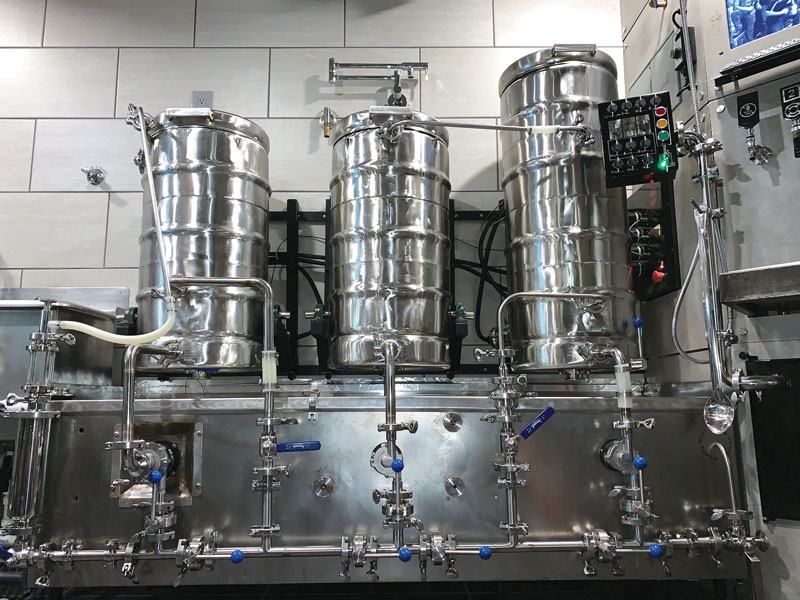Topic: Fermentation
Fermenting Beer Under Pressure
Yes, using gravity to monitor fermentation status is the best method for use at home because observing bubble activity and kräusen appearance are simply not reliable indicators. I am a fan of
Using a Water Bath for Temperature Control
Controlling temperature is a key part of producing better beer. Whether it is keeping your fermenting beer in the proper temperature range for the yeast strain you’ve chosen or for extended lagering
The Importance Of Fermentation Temperatures
Fermentation temperature definitely affects beer flavor and fermentation rate, however some yeast strains are more influenced by temperature than others. I will come back to this in a moment. Brewers who have
The Importance of a Diacetyl Rest
Diacetyl rests or colloquially known as d-rests, whether brewing lagers or ales, are good insurance policies to help ward off diacetyl. Many recipes focus on wort production and provide little in the
Using a Corny Keg For Chilling & Primary Fermentation
There are a few possible problems with this plan, but none are insurmountable. What you are describing is something akin to coolships that were ubiquitously used by lager and ale brewers before
Clues To Identifying An Infection
Identifying beer spoilage by visual observation can be a challenge, but the photo of your brew does look suspect. If I were to wager a bet, my money would be on Acetobacter
Between Pitch and Pint: Advanced fermenter/dispenser automation
Automation is a fun side hobby for many brewers, but it is not just for the brewhouse. Get some high-level ideas and info on the components available for automating your cellar.
Conical Fermenters
Small-scale conical fermenters are becoming increasingly popular with homebrewers. Brew Your Own Magazine’s Technical Editor Ashton Lewis shows you how to get the most out of your conical fermenter and what makes
Forced Fermentation Tests
Brew Your Own Magazine’s Technical Editor Ashton Lewis shows you how to conduct your own forced fermentation tests to help determine in advance the expected finishing gravity of a batch of beer
Fermentation Temperature Control
Being able to control your fermentation temperatures is one of the true keys to making better beer. Brew Your Own Magazine’s Technical Editor Ashton Lewis shows you some options for temperature control
Open Fermentations: Circling back to fermenters of yesteryear
Open fermentation is something that is espoused for many styles to develop their expressive character. Denny and Drew explain the process and why you may want to give it a try along with a favorite recipe of theirs.
Selecting a Fermenter
This is a straight-up opinion question and I will give you my thoughts sans specific type or brand. And as a reminder to seasoned readers and news to newer readers, 20 years






